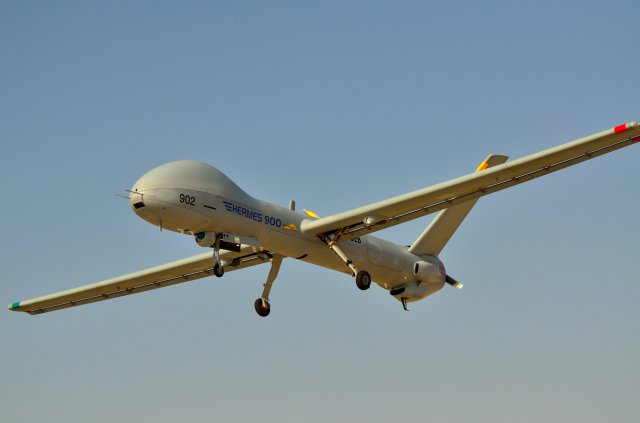An Israeli investigation into last year’s crash of a drone ordered by the Swiss army has found that the cause was a structural design flaw which has since been fixed.
The Hermes 900 HFE unmanned aircraft crashed during a test flight last August in the Israeli desert, where it was completely destroyed. No injuries or collateral damage were reported.
According to the Swiss army, the drone manufacturer, Elbit systems, has since concluded its investigation, and rectified the structural problem that caused the tail unit to become detached from the body of the drone.
During a high-speed manoeuvre, the investigation found, with the drone flying close to its “symmetric-flutter boundary”, severe structural oscillations led in “a very short period and aggressive process” to the tail unit coming detached, and then the crash.
The problem has since been resolved, without any large scale design changes, and the damages paid for completely by Elbit, the Swiss army said.
The drone was one of six ordered by the army in 2016, at a cost of CHF 250 million (around $256 million at the time). The delivery date is now likely to be mid-2022 at the earliest, three years later than initially planned.
According to the army statement, the delays are mainly due to a difficult certification process with Israel’s civil aviation authorities, as well as to a slower than expected development of a “sense-and-avoid” radar system to be fitted to the drones. Covid-19 also “disrupted industry and severely limited cooperation with the supplier due to travel restrictions and quarantine requirements”, the army wrote.
The six unmanned aircraft are expected to be used to monitor Switzerland’s borders and help in the fight against crime tourism, irregular migration and organised smuggling.
The army’s former Ranger drones, which had been in use for 20 years, have already reached the end of their lifespan; as a result, until the new drones are up and running, the army is using helicopters to monitor the borders.
Source: Swissinfo

